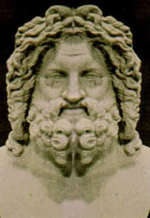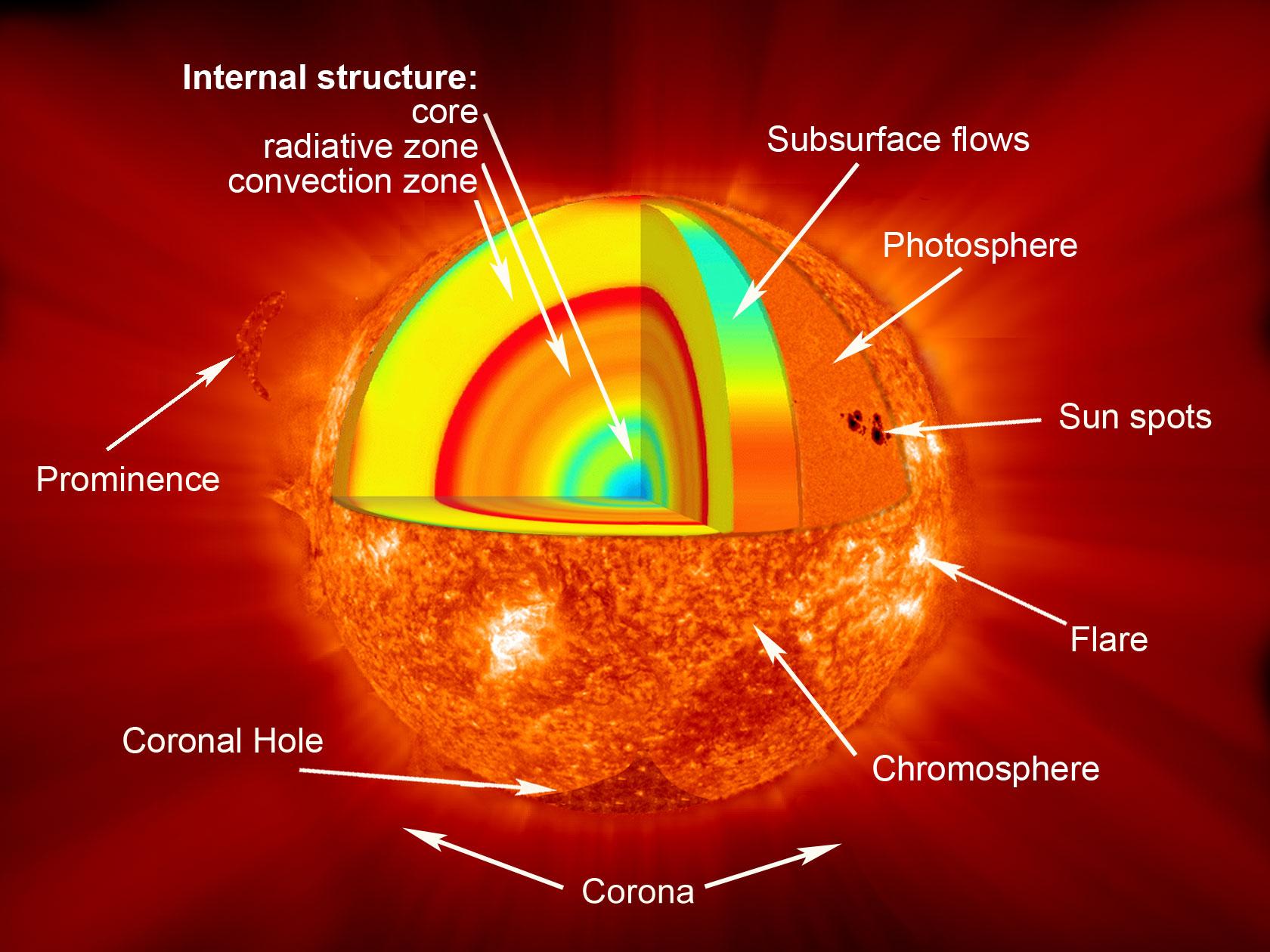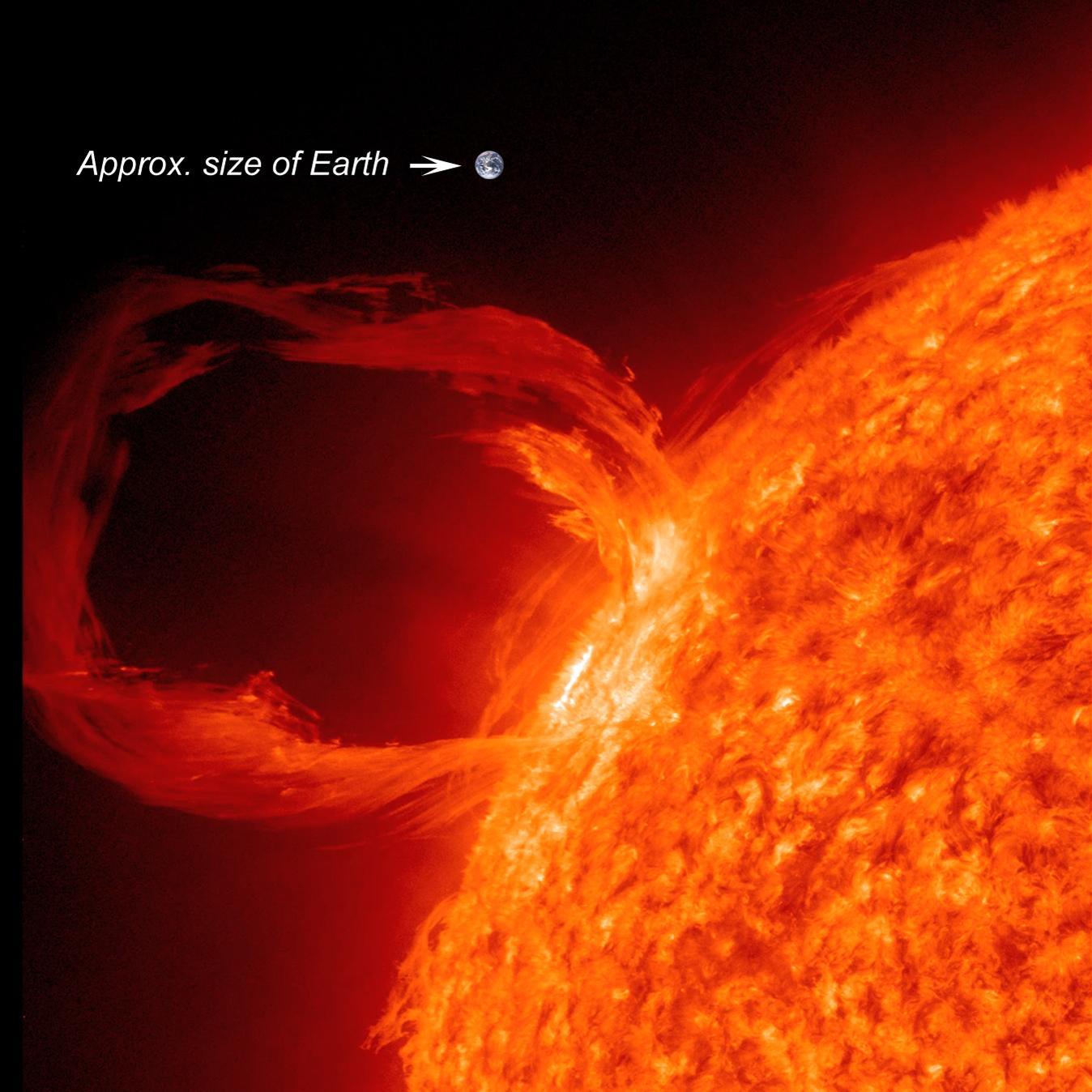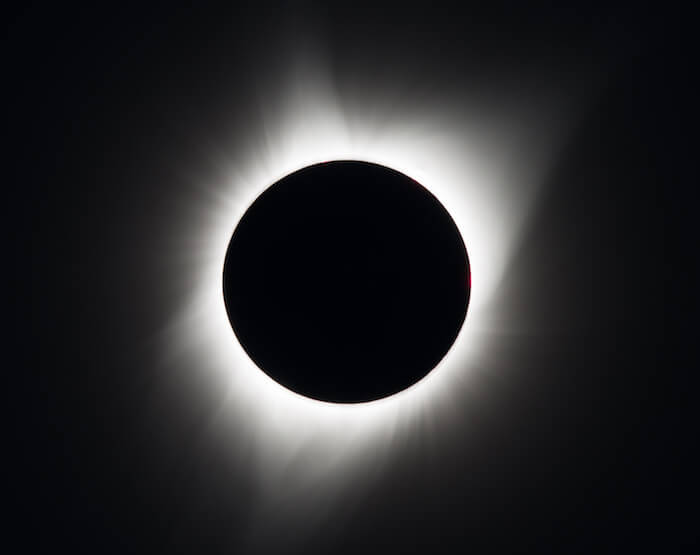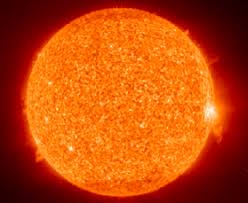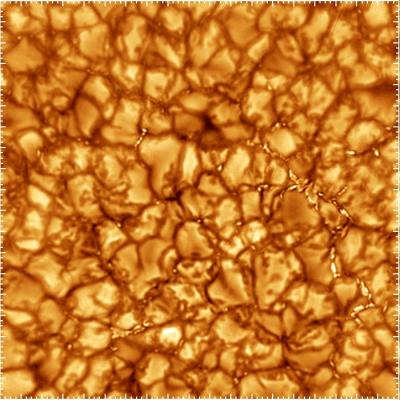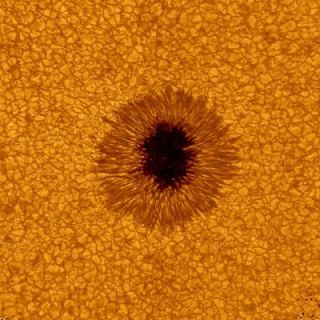Let's start by admiring the Sun: the enormous plasma sphere generating prodigious amounts of energy that constantly radiate through space in all directions. We on Earth receive about one billionth of this radiant energy, a trifling amount by solar standards, but enough to sustain our world.
Yesterday we plumbed the Sun's unfathomable depths and explored its inner regions, from its nuclear furnace core to the comparatively cool gaseous layer rendered perpetually turbulent by convective cells. We also learned that the constant photon stream issuing from the core requires approximately 300,000 years to migrate to the outer layers. Each and every day we are literally bathed in ancient starlight.
Today, we begin our tour of the sun's outer regions. Whereas yesterday we proceeded from the deepest depths outward, today, we'll examine the various regions alphabetically.
CHROMOSPHERE:
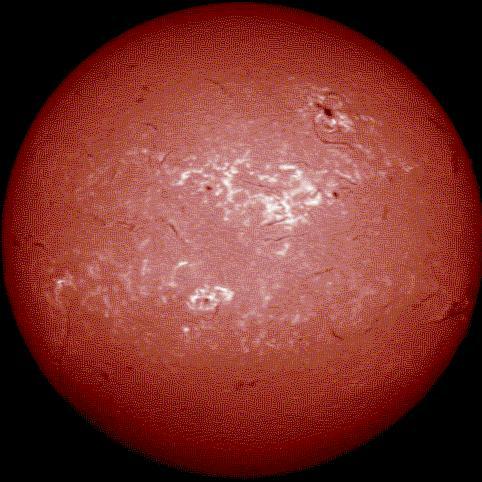
The Sun as viewed through a hydrogen-alpha filter.
The Sun's atmosphere consists of three main layers: the photosphere, chromosphere and corona. Extending between 3000 - 5000 kilometers deep, the chromosphere is just above the photosphere. Because the chromosphere's density is 1/10,000 that of the lower photosphere, it is generally invisible except during solar eclipses when it appears reddish. The chromosphere is a highly complex atmospheric layer responsible for such phenomena as spicules, plasma jets about 300 - 350 kilometers in diameter and prominences, large loops of heated gases that can extend thousands of kilometers above the "surface." The lengths of some of the most powerful prominences have exceeded 500,000 kilometers.
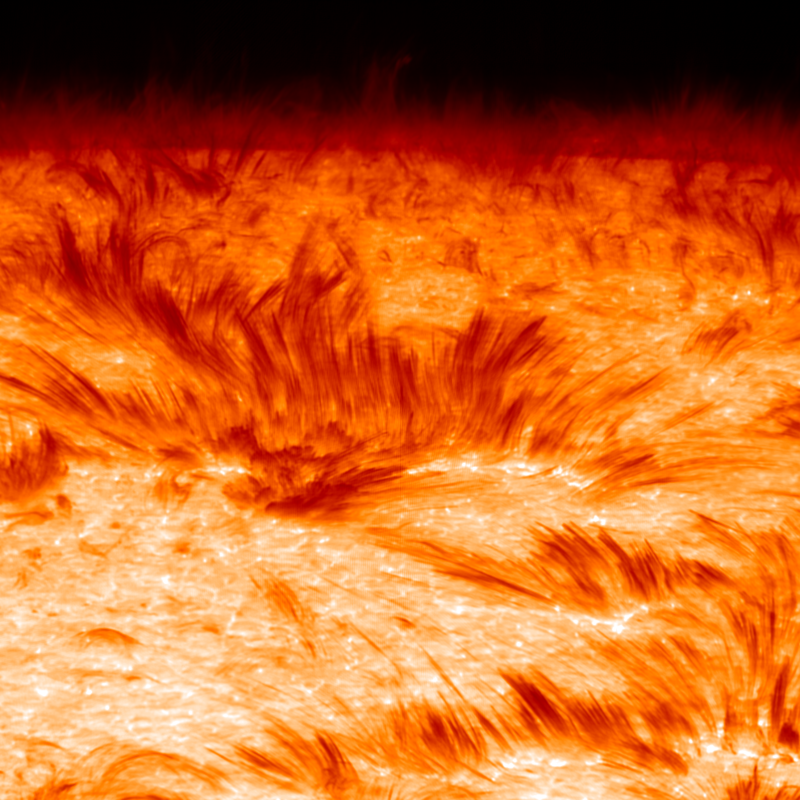
Spicules
Prominences with an image of Earth juxtaposed for size comparison purposes
Perhaps the most curious feature of the chromosphere is the temperature gradient. The chromosphere's temperature actually increases with increasing distance from the solar interior, the exact opposite of the situation in the photosphere which is hottest at its lowest level. While the mechanism responsible for this temperature inversion remains unknown, it is possibly the result of magnetic reconnection, the phenomena by which magnetic fields connect and then disconnect causing the release of copious energy. Magnetic reconnection might also explain the dynamism we observe within this layer, such as prominences and spicules.
CORONA:
One can often observe the corona during a total solar eclipse
Deriving its name from the Greek word for "wreath," the corona is the Sun's outermost layer. This rarefied gaseous region extends for millions of miles beyond the photosphere. Its light, which is faint owing to the low coronal density, originates from three sources: sunlight reflected off dust particles, sunlight scattering off free electrons and emissions from ions located within the surrounding plasma. With a temperature between 1 - 3 million Kelvin, the corona is also the hottest region along the Sun's outer layers. Spanish astronomer Jose Joaquin de Ferrer (1763-1818) coined the term corona after having observed it during a total solar eclipse, the only time it becomes visible unless one observes the Sun through a coronagraph. Even though it is so hot, the corona's density is one billionth that of the photosphere and so emits faint light.
Within the corona one will find "coronal holes," cool, less dense regions within the corona. These holes tend to migrate toward and then away from the poles during the 11-year solar cycle. As the cycle progresses toward the solar maximum, the holes move toward the poles and then as the cycle approaches a minimum, they migrate away from them. We can see in the graphic above that when the magnetic field lines do not loop back to ensnare the energy, solar wind escapes into space.
A corona based event that can affect Earth is a coronal mass ejection, the expulsion of great quantities of charged gases from the corona into outer space. These CME's have been responsible for significant auroral activity on Earth and other planets surrounded by magnetic fields.
PHOTOSPHERE
Photosphere: the Sun's radiative layer, often mistakenly called the Sun's "surface."
We often mistakenly refer to this layer as the Sun's "surface," because this is the region from which light and heat are radiated into space. The photosphere's effective temperature is approximately 5,500 degrees C, even though the temperature can range between 4,230 - 5,730 degrees C. The photosphere is about 100 kilometers thick and consists of short-lived "cells" called granules.
Granules: looking very much like droplets of molten gold
With a diameter rarely exceeding 1000 miles, granules are miniscule relative to the Sun. Convection currents produce them, causing them to form and re-form quickly. Granules generally last about 10 - 20 minutes before dissipating, only to be replaced by others.
The best known phenomena along the photosphere are sunspots: cooler, and therefore darker regions where magnetic fields have drawn forth the gases and in the process cooling them. A sunspot consists of a dark inner area called an umbra, and the lighter surrounding area known as the penumbra, not to be confused with the umbra and penumbra associated with solar and lunar eclipses. Sunspots tend to persist for weeks or sometimes months, depending on their size. Astronomers recognize an 11-year sunspot cycle when the number of sunspots increases and decreases in response to changes in the Sun's magnetic field. Currently, this cycle has been disrupted as we seem to be moving into a protracted solar minimum. The year 2020 has so far had 102 spotless days. There were 281 spotless days in 2019 and 221 in 2018.
Sunspot: If seen in isolation, the sunspot would appear reddish and brighter than the full moon. Only when we see the sunspot relative to the hotter surroundings does it appear dark to us.
This brief tour of the Sun's outer layers illustrates the complexity and dynamism of that brilliant orb that illuminates the day time sky and sustains life on Earth. Even though the Sun is the closest star, astronomers still have much to learn about it. Hence, the deployment of the Parker Solar Probe that was launched in 2018 and has already four perihelion passages around the Sun. The next one occurs next month.
Next week we finally begin our exploration of the other stars.
Quiz tomorrow.
To subscribe or unsubscribe from the Daily Astronomer:
